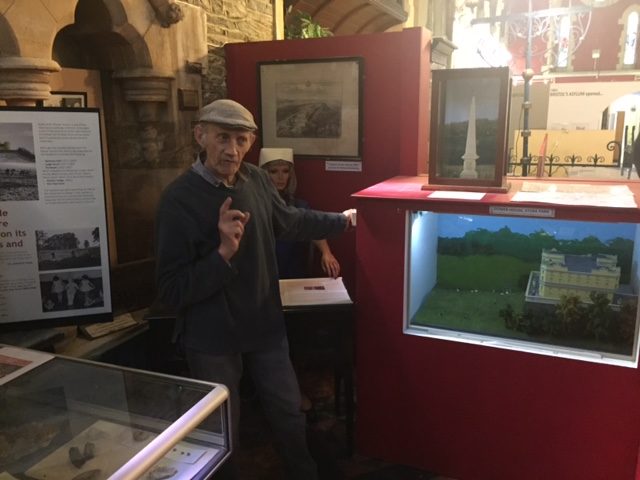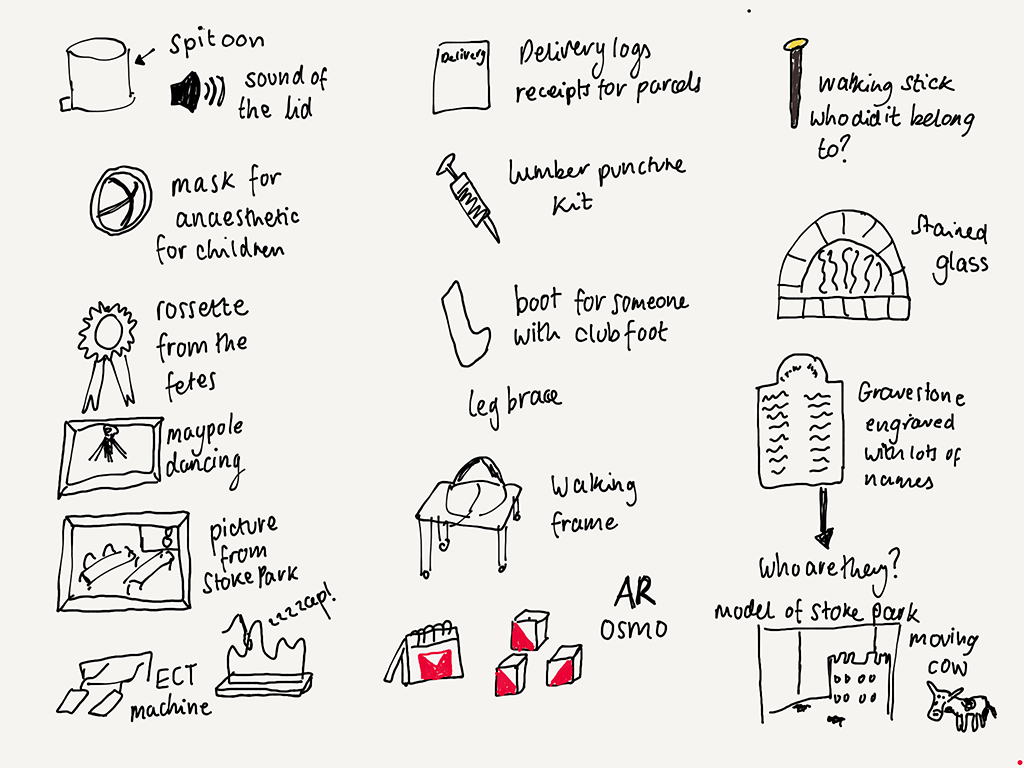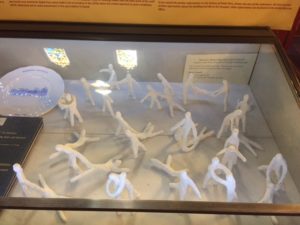On Monday 25th June the purpleSTARS, who work with the Rix team to make Museums more inclusive using sensory and digital interpretation approaches, visited Glenside Hospital Museum in Bristol. The museum is working with Rix and the purpleSTARS team engaging local volunteers with learning disabilities from the Bristol area.
The aim is to research and interpret objects that have been collected from Stoke Park house, which used to be an institution attached to Glenside, where people who were considered to have a learning disability used to live.

The team learned that the definition of ‘learning disability’ used back when Stoke Park was open was very different from our understanding about people with learning disabilities today. The Stoke Park collection is currently on display at the Glenside museum and the group is looking to explore how working on multi-sensory interpretation of some of the objects can make the collection more accessible and meaningful for visitors with learning disabilities. The shared goal is to share stories about people with learning disabilities and how they used to be treated in the UK and to improve understanding about how conditions can be changed.
The purpleSTARS travelled from London to Bristol to share their knowledge and expertise with the new Bristol volunteers, to help them progress on their project. The purpleSTARS shared some of their Wiki building work, particularly the WIKI produced as part of the Access All Areas’ ‘Madhouse Project’. This served as an excellent example of work around the history of people with learning disabilities and the way they were housed in hospitals and other large Institutions, like the Glenside Hospital site.
The team from Bristol shared their own work to date in which they have explored the history of Glenside Hospital and reflected on the way disabled people’s lives have been shaped by such institutions. This work included the production of poetry by volunteer Dave Pearse (Poet and Curator) that was inspired by what he had learned about Stoke Park:
The Mansion on the hill
The Mansion on the hill
A romantic ideal for many
But to some this was a symbol of sadness
Of children taken from family
To grow up institutionalised
Only as time progressed and minds opened
Was pleasure and kindness brought to these young colonists
From colony institution to communal home
A home of kindness and care.

Another volunteer, Heather Whitcher (Curator) shared some games that doctors used to use to assess patients’ intellectual ability and there was a discussion about making a replica version so that visitors could have a go themselves. Joshua Wrixon (Curator) shared with us an old head protector that was used for people with epilepsy. John Pimm (Volunteer and Trustee since 1993) has an extensive knowledge of Stoke Park as he used to be Stoke Park hospital Transport Manager. He shared a machine used to subject people to electric shocks as part of their treatment.

This collaborative work brings together people with learning disabilities alongside staff and volunteers from museums across the country to use digital technologies to re-interpret public culture, applying multi-sensory approaches to make collections more accessible for everyone. This builds on Rix Research undertaken as part of the Sensory Objects project with Reading and Leeds Universities, the National Trust, British Museum and the Museum of English Rural Life.
For further information see: http://sensoryobjects.com and https://purplestars.org.uk/ .

Ajay Choksi from the Rix team was there as part of the purpleSTARS. He commented after the visit, ‘I found Glenside Hospital Museum very interesting. I saw that they kept the objects safe in glass cases with ‘DO NOT TOUCH’ signs. They included drawings of residents from back in the days. They showed people with sadness, upset and illness. I saw clay models too of people supporting each other, holding each other, holding hands and not letting go. Here was a positive picture – if we let go it is more upset. Here was a positive story of our history.’





